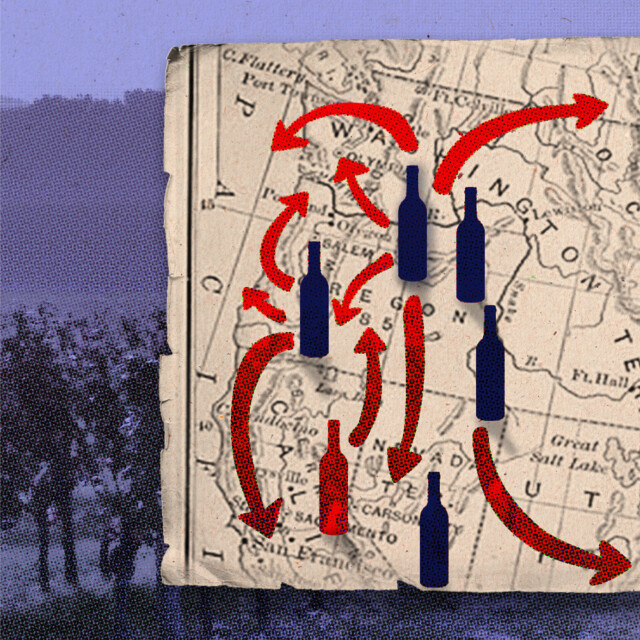Last October I attended a Syrah-themed wine dinner at Brooklyn’s Gus’s Chop House. The event name on Resy was “Syrahhhh!” and as an admirer of the grape, I was immediately sold. The dinner’s emphatic title captures the fervor that many wine lovers feel for this variety. Though it’s not as well known as Pinot Noir or Cabernet Sauvignon, Syrah has a dedicated following of those enchanted by its distinct characteristics.
These wines might not be for everyone. They’re often described as “meaty,” “animal,” or even “feral,” but along with those notes come flavors of tart berries, black pepper, violets, and olives. These bottles tend to appeal to industry professionals and maybe a few enthusiasts who managed to slip away from the charm of Burgundy or Bordeaux and discover the complex and savory wines of the Northern Rhône’s small but prestigious appellations: Côte-Rôtie, Cornas, Hermitage, and Saint-Joseph.
Outside of France, Syrah has struggled to garner the same respect. The variety is extremely picky when it comes to climate and soil, and can only express those enticing notes of pepper and cured meat if planted in cool sites. So when warmer Australian regions adopted the grape as “Shiraz” and made it into jammy, chocolaty wines that lacked nuance, it went from underappreciated to completely misunderstood. Examples from California weren’t helping at that time either, as most producers either leaned into the grape’s bolder side or blended it to add more color and body to their Pinot Noir.
Thankfully, some U.S. winemakers have carried the torch for Syrah over in recent decades, preaching its potential in California’s coastal and high-elevation vineyards. Their site-specific wines proved to be lighter-bodied, spicy, and age-worthy — like the revered bottles of the Northern Rhône. And while these pioneering producers may have found a cult-like following, the appreciation for U.S. Syrah remained niche.
Recently, more stand-out bottles from across the West Coast have hit the shelves and stolen somms’ hearts. An increasing number of winemakers are eager to spread the love for this grape, but the plots of land well suited to the variety are few and far between, forcing producers to search for new areas where Syrah can thrive.
So is domestic Syrah finally catching on? And what regions will help bring it into the limelight?
First Wave
For a grape that’s received little recognition stateside, Syrah has experienced a surprising number of ups and downs. None are more familiar with the struggle than those who made the first push for Syrah in the U.S. in the late ‘90s and early aughts. California producers like Pax Wines, Arnot-Roberts, Peay Vineyards, Edmunds St. John, Failla Wines, Tensley, and Piedrasassi are among the most well known for their game-changing, cool-climate Syrah expressions and undying commitment to the grape.
But, after gaining some momentum in the early 2000s, a few unforeseen events derailed the crusade for Syrah. Pax Mahle, owner of Pax Wines and formerly Wind Gap Wines, recalls that the financial crisis of 2008 had a severe impact on plantings. “No one could sell Syrah, so a lot of vines were pulled out in that 2008 to 2009 economic collapse,” Mahle says. This downturn even prompted The New York Times to question its future, with Eric Asimov exploring the variety’s fortunes in his 2010 article, “Is There Still Hope For Syrah?”
Mahle also remarked that Merlot wasn’t the only victim of the “Sideways” effect, as the sudden obsession with Pinot Noir also crushed Syrah’s chances of taking off.
In a way, the upheaval of Syrah vineyards across California was a blessing in disguise. Many of those vines were contributing to the variety’s bad reputation as an inky, over-extracted wine that only served to bulk up red blends. “There was an over-planting of Syrah in all the wrong places,” Mahle says. “The difference with the people who have lasted is that they have vineyards planted in cooler sites with great soils, so they provide that tension people look for in a good Syrah.”
“We were in the right place at the right time,” says Arnot-Roberts co-founder Duncan Meyers. “When Ehren Jordan of Failla Wines started his own estate in Fort Ross Seaview, we were lucky enough to get the Que Syrah vineyard, which is our crown jewel of coastal Sonoma Syrah — both the oldest and closest to the ocean.”
When it comes to the current state of Sonoma, Meyers warns, “There aren’t a lot of new Syrah plantings and the existing sites are pretty much tied up. If you’re a young brand and want to start making cool-climate Syrah, it would be nearly impossible.”
Searching For Sites
Luckily, Syrah continues to have a chokehold on those enamored with its more peculiar qualities. So despite the struggles, there’s a growing number of passionate producers searching for ways to make the dream of cool-climate Syrah work in the U.S. But with the most desirable sites on the elite Sonoma Coast already spoken for, the latest examples are coming from lesser-known California AVAs. Even a set of winemakers in Oregon are eager to work with the grape.
“Syrah is perhaps ‘the best’ red for Santa Cruz, even above Pinot. The cool climate of Santa Cruz County drives the beautiful elegant side of Syrah.”
One of these producers is Josh Bergström, founder of the Willamette Valley’s Bergström Wines. Though Bergström’s elegant expressions of Pinot Noir and Chardonnay are wildly successful, he felt compelled to work with Syrah (which he admits is his favorite grape). He first fell in love with it in France, but he was inspired by the quality of cool-climate Syrahs from California to create his latest project, Gargantua, which he describes as a study in West Coast Syrah. “I wanted to join those people doing the good work and be a part of America’s Syrah story,” he says.
Since Oregon isn’t necessarily teeming with perfectly positioned Syrah vineyards, Bergström had to get creative, searching the West Coast for sites that could make wines that express Syrah’s ineffable savory qualities. For the Oregon bottling, he makes a “complete state” blend with grapes sourced from every major region, allowing cooler sites like the Willamette Valley to balance out the deeper wines from the warmer areas like the Columbia River Gorge. Gargantua also makes California and Washington bottlings as well as a “pantagruel” wine, which blends fruit from all three states.
Gargantua isn’t the only label reaching outside its region to source quality Syrah grapes. Producers like Bedrock Wine Co. in Sonoma might not have access to those elusive Sonoma Coast sites, but it works with vineyards from across the state, including lesser-known areas in Santa Barbara County like Alisos, Ballard Canyon, and Cat Canyon. As an up-and-coming region with a wealth of cooler sites that benefit from the Pacific Ocean’s influence, many believe the hope for Syrah lies in Santa Barbara.
Talented producers have also honed in on cool-climate Syrah expressions in more off-the-beaten-path California AVAs like the San Luis Obispo (SLO) Coast and the Santa Cruz Mountains. Though less established than the Sonoma Coast, these areas provide the desired ocean influence to make cool-climate wines. Mikey Giugni, winemaker for Scar of the Sea winery on the SLO Coast, works with the Bassi Vineyard, planted in sandstone soils only a mile and a half from the ocean, to make a light and peppery Syrah that comes in at just 12 percent alcohol. James Jelks of Florèz Wines works with two unique Syrah vineyards, wedged between the water and the redwoods in the Santa Cruz Mountains.
“Syrah is perhaps ‘the best’ red for Santa Cruz, even above Pinot,” Jelks says. “The cool climate of Santa Cruz County drives the beautiful elegant side of Syrah. Other progressive winemakers have their eyes set on this variety for the region as well, like Madson and Samuel Smith.”
Though it might take a little extra digging to find gems like these in the more remote and scattered regions, those who put the effort into uncovering the right spots will be rewarded with savory and spicy Syrahs.
But Will People Buy It?
Even though there’s a new wave of enthusiastic producers looking to champion this variety, when it comes to the financial viability of producing Syrah, people remain cautious based on the grape’s rough history.
“I’d say that Syrah is even more difficult to sell than to source, which is wild,” says Travis Todd of De La Boue wines in Oregon. “Somms and wine nerds love it, but distributors like to tell you that no one buys Syrah. And domestic Syrah is a hand-sell for certain.”
Some are more optimistic, including Bergström, who says that Oregon Syrah reminds him of Chardonnay in the Willamette Valley about 10 years ago, or even Pinot Noir in the U.S. some 50 years ago. “When we started making Chardonnay, no one cared about Chardonnay in the Willamette Valley,” Bergström says. “Now it’s impossible to find Chardonnay grapes to buy — you have to offer twice the price of Pinot Noir.” Bergström believes the same story might unfold for Syrah in this area.
Presqu’ile Winery in the cool-climate Santa Maria Valley sub-AVA of Santa Barbara also has a positive outlook, and has actually seen significant momentum in sales. “Our Syrah sells extremely fast,” Dieter Cronje, winemaker at Presqu’ile, says. “And I’ve seen an increased interest from local winemakers in buying Syrah grapes from our vineyard.” Due to the demand, Presqu’ile purchased the farm next door to their vineyard in 2022 to expand Syrah production.
“We make Syrah for the people who appreciate it. It’s never going to be like a Pinot Noir and Chardonnay on the shelf, even though I know a lot of people wanted that to happen.”
Even in the storied Sonoma Coast, producers are considering supplementing Pinot Noir with Syrah to hedge against the detriments of climate change. Jasmine Hirsch, winemaker for the renowned Hirsch Vineyards, is planting an acre of Syrah on her family’s historic cool-climate vineyard in the coveted Fort Ross Seaview appellation. If Pinot eases its grasp on the region with warming weather, Syrah could finally have a chance to thrive in Sonoma’s cooler sites.
“People always talk about how Syrah is hard to sell, but good wine is good wine and I do think that there is going to be growth in Syrah,” says Giugni of Scar of the Sea. “It’s very popular with the new-age winemakers, and this generation of producers isn’t making wine for customers. They’re making wines for themselves and hoping the consumer follows their palate.”
This different approach could be what helps Syrah excel this time around. In the first wave, producers were pushing for Syrah to be a mainstream, commercial wine. But since it can only thrive in specific areas, this variety has the best chances of earning a quality reputation if it stays relatively small. Nonetheless, these wines could certainly benefit from an increased fan base.
“We make Syrah for the people who appreciate it,” says Scott Schultz of the popular Sonoma-based Jolie-Laide wines. “It’s never going to be like a Pinot Noir and Chardonnay on the shelf, even though I know a lot of people wanted that to happen.”
Any number of these regions have the potential to become world-class destinations for Syrah. Maybe it will take off in Oregon. Or be the next big thing in Santa Barbara. But, let’s face it — Syrah’s heard it all before.
8 U.S. Syrahs to Try:
Bedrock Wine Co. California Syrah 2021
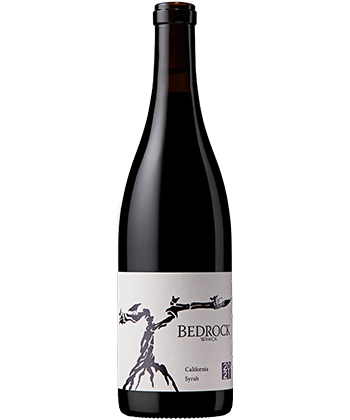
Bedrock makes several Syrah bottlings, including an exceptional single-vineyard expression from Santa Barbara’s esteemed Bien Nacido Vineyard. The team likes to think of this California Syrah as the Crozes-Hermitage to the Bien Nacido’s Côte-Rôtie. It’s sourced from lesser-known areas in Santa Barbara like Alisos, Ballard Canyon, and Cat Canyon, which come together to make a beautifully balanced wine — and one of the best values in U.S. Syrah you can find.
Average price: $30
Florèz Wines Remus Syrah 2022
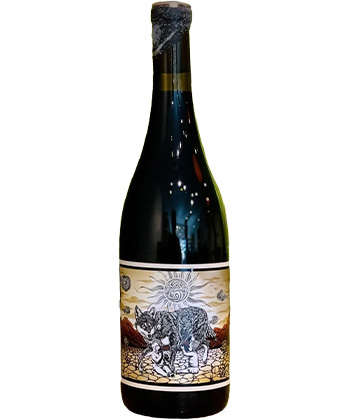
James Jelks works with two distinct Syrah vineyards in the Santa Cruz Mountains to make his “Romulus” and “Remus” Syrah bottlings. This one is from the plot slightly closer to the ocean, and at only three miles from the shore, this wine really captures the cooling influence. It’s earthy and spicy with notes of mixed berries, smoked meat, and black pepper.
Average price: $42
Jolie-Laide North Coast Syrah 2020
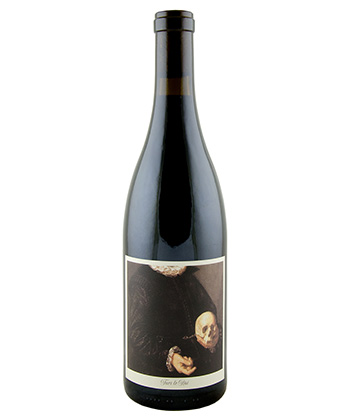
Jolie-Laide works with high-elevation sites from across California’s North Coast to make this refined wine. The grapes are foot-trodden, whole-cluster fermented, and aged for 10 months in neutral French oak. It’s brimming with olive tapenade aromas, and fresh blackberry and blueberry notes on the palate.
Average price: $42
Scar of the Sea Bassi Vineyard Syrah 2022
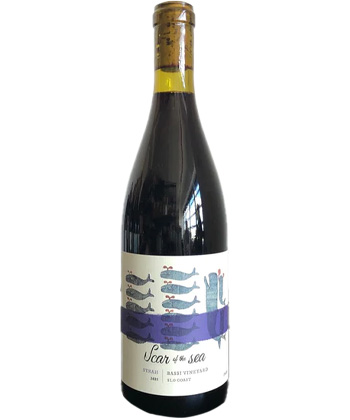
Bassi Vineyard’s proximity to the ocean not only makes it a stunningly beautiful site, but also one of the best areas for Syrah production on the SLO Coast. The sea breezes and sandstone soils lend to this wine’s lighter body and blazing acidity. It has crunchy red fruit with flecks of black pepper and anise sprinkled throughout.
Average price: $46
Presqu’ile Syrah 2020
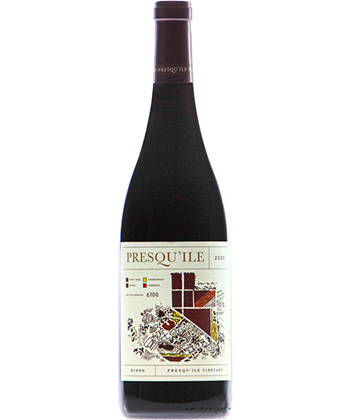
The Presqu’ile Vineyard benefits from the cooling breezes that blow through the Santa Maria Valley, and it shows in this herbaceous, savory wine. For those true pepper heads who live for Syrah’s distinct cracked black pepper aromas, the wines from Presqu’ile are definitely for you. It’s like putting your nose right up to the grinder.
Average price: $47
Pax Sonoma Hillsides Syrah 2022
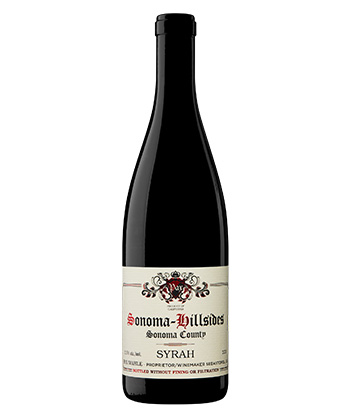
Inspired by the expressive wines of France’s Saint-Joseph appellation, Pax crafts this Syrah from a number of hillside vineyards that lend to the freshness that Syrah can only achieve on cool-climate slopes. It has aromas of spice and smoked meat and wonderful concentration of fruit while still maintaining a certain brightness and buoyancy on the palate.
Average price: $65
Gargantua Oregon Syrah 2019
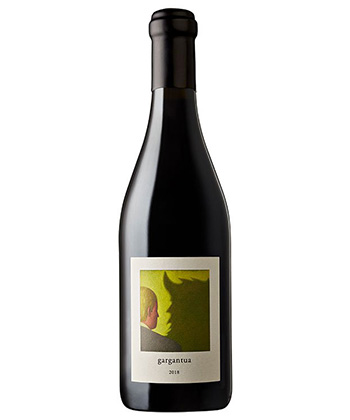
This blend represents the potential for Oregon Syrah, sourced from vineyards across the state to make one harmonious wine. The nose brings delicate notes of violets, ginger, berries, and spice, and the palate delivers juicy cherry and blackberry notes and a great structure. This one is certainly built to age.
Average price: $75
Arnot-Roberts Que Syrah Vineyard Sonoma Coast 2020
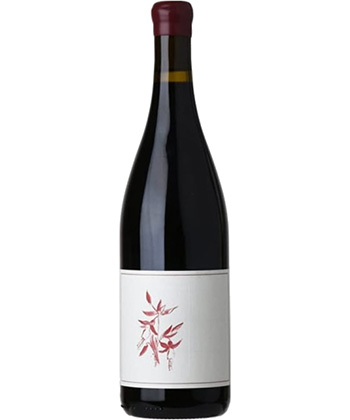
Winemaker Duncan Meyers believes the Que Syrah Vineyard is the pinnacle of coastal, cool-climate Syrah in the U.S. And this bottle makes a good argument for it. It’s extremely light-bodied at only around 12 percent alcohol, but packs a punch of flavor with tart pomegranate, raspberry, cured meat, pepper, and herbs.
Average price: $82
